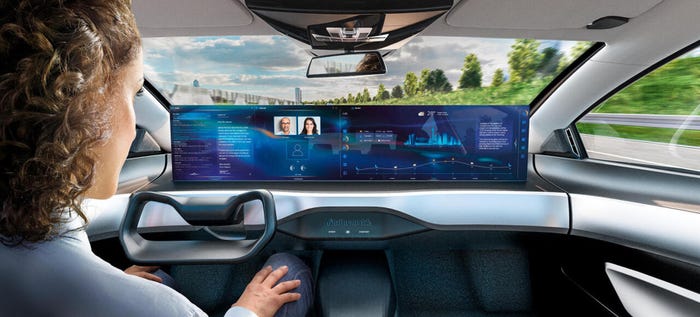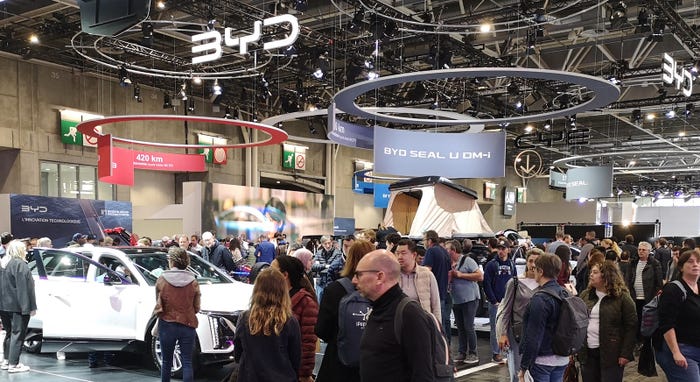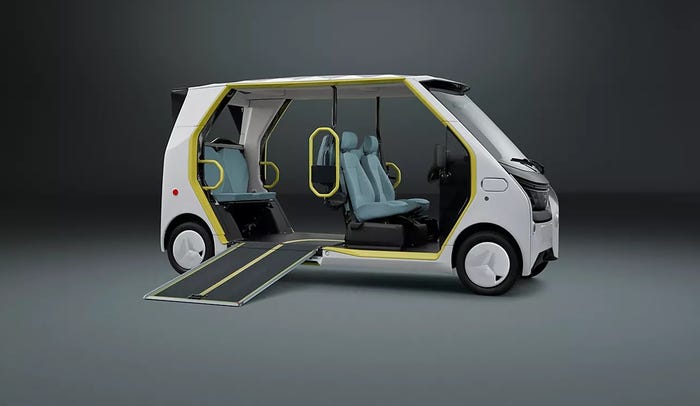GM EVs to Support Bidirectional Charging
General Motors is kicking off a business to sell customers accessories that will allow them to power a home and other BEVs via bidirectional charging.

General Motors is introducing a suite of accessories through its GM Energy business unit enabling battery-electric-vehicle customers to unlock vehicle-to-home bidirectional charging.
GM’s first bidirectional-equipped BEV is the ’24 Chevrolet Silverado EV First-Edition RST, which will be equipped with Vehicle-to-Home (V2H) bidirectional charging technology. Moving forward, GM says it will expand V2H bidirectional charging technology across its portfolio of Ultium-based BEVs by model year 2026.
Unlike conventional BEV charging systems, where energy flows from a power source to the vehicle's battery, bidirectional BEV chargers allow power to flow in two directions. It allows electric vehicles to not only receive energy but also send it back, enabling the vehicle to share power with other devices or even the utility grid.
At launch this year customers will be able to purchase GM Energy’s V2H bundle, which includes the necessary equipment to enable the transfer of energy between a customer’s compatible BEV and a properly equipped home. GM Energy will make additional residential solutions, including stationary energy storage and solar integration, available for purchase later this year.
Other applications for bidirectional charging include Vehicle-to-Vehicle (V2V), Vehicle-to-Load (V2L) and Vehicle-to-Grid (V2G).
“GM Energy is committed to making the transition to an all-electric lifestyle an even more compelling option by simplifying all aspects of personal energy management,” says Wade Sheffer, vice president of GM Energy. “With the introduction of these new offerings, it has never been easier for our customers to access the expanded benefits of a holistic EV ecosystem, helping to mitigate the impacts of power outages and having the ability to offset certain energy costs over time.”
Despite the benefits of being able to power a home with a BEV during, for example, a weather-related power outage, relatively few BEV models are equipped for the task. Besides the Silverado, models properly equipped for bidirectional charging include: Ford F-150 Lightning (V2G, V2H, V2V); Genesis GV60 (V2L); Hyundai Ioniq 5 (V2L); Hyundai Ioniq 6 (V2L); Kia EV6 (V2L); Kia Niro (V2L); Lucid Air (V2V); Mitsubishi Outlander PHEV (V2L); Nissan Leaf (V2H, V2G); Tesla Cybertruck (V2L); VW ID.4 (V2H).
GM Energy’s products will be accessible through current GM mobile brand apps, allowing customers to manage the transfer of stored energy between applicable and connected GM Energy assets.
Bidirectional charging is gaining interest and momentum to power homes during more frequent power outages and to supplement the grid in various states challenged by an overtaxed grid and storm frequency.
Maui’s wildfire last year was among the deadliest in U.S. history, Hurricane Idalia caused up to $20 billion in damage in the southeastern U.S. and many Texas cities have experienced frequent power outages and their hottest summers on record. Michigan has experienced numerous power outages mostly during winter months. Many experts agree that the current power grid infrastructure is not sustainable or adequate to cope with climate change and the swell of BEVs.
There are studies ongoing to assess how BEVs can benefit the grid rather than just be a drain on it. A new University of Colorado-Denver-led study is exploring the potential benefits of incorporating electric vehicles into the grid to better meet modern energy needs.

Similar to how residents of solar-powered homes can generate extra electricity and sell it back to utility companies, a vast “bidirectional charging” network could be established for BEV owners to transfer power back to the grid. Such Vehicle-Grid Integration (VGI) systems could be especially effective during power outages and natural disasters when large populations need power immediately.
“In those situations, it’s cheaper for the utility company to gain power quickly and locally,” says the study’s lead principal investigator Lynne Kiesling, an economist and research professor with CU-Denver’s College of Engineering, Design & Computing. “You don’t have to deal with power-line losses because the longer the distance you transmit electricity, you lose some of it. There’s also an environmental benefit because a utility (company) doesn’t have to fire up a gas or coal plant to respond to that emergency.”
Pricing, installation cost and timeline for delivery for each of GM Energy’s initial product bundles will vary. Additional information about GM Energy and its product and service offerings is available at gmenergy.com.
About the Author
You May Also Like



.jpg?width=700&auto=webp&quality=80&disable=upscale)

